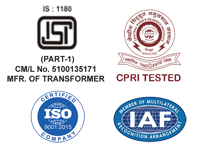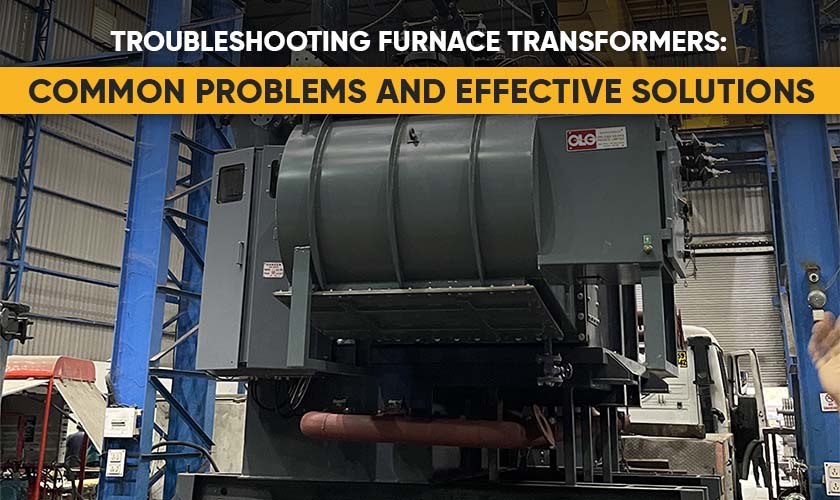Transformers occupy core positions in electric power delivery systems, enabling bulk energy transfers across large systems. They must be operated within certain temperatures so that their performance, life, and safety are not compromised. Functional failures or serious damages may happen if the operating temperatures are too high. This underpins the significance of transformer cooling in their design and operational characteristics.
In this article, the writer discusses the important transformer methods of cooling, the methods of heat dissipation, temperature rise limits, and other relevant standards so that readers gain detailed knowledge on this important subject of transformer upkeep.
What are The Essentials Behind Transformer Cooling?
When a transformer is used, electrical energy is inputted into it, causing electromagnetic induction. This process is not completely efficient, so heat is produced. Other electrical losses, such as core losses (hysteresis, eddy currents) and winding losses (I²R losses), are done, and these losses also produce heat. The overheating may damage the insulation system, reduce performance, and cause a practically useless transformer in a shorter period.
Optimal cooling is a requirement for:
Prevent Overheating: Restricting temperature during operations will guarantee smoother run times.
Enhance Longevity: Optimal cooling operates in consideration of wearing down of the machinery.
Boost Efficiency: Excessive temperatures may lead to energy wastage.
Meet Standards: The cooled system will comply with the rules and standards of the particular industry.
The type of cooling technique can change depending on the size, use, and place of transformer installation. All of these factors can drastically change the type of cooling system used.
Common Cooling Methods for Transformers
Transformer cooling systems are categorized based on the cooling medium (air or oil) and circulation method (natural or forced). Here are the primary cooling methods:
1. Air Natural (AN)
This method uses ambient air to cool the transformer naturally. It’s primarily used for dry-type transformers where the heat dissipates into the surrounding air through natural convection.
Applications: Indoor installations, low-capacity transformers.
Advantages: Simple and maintenance-free.
Limitations: Limited cooling capacity, suitable only for smaller transformers.
2. Air Force (AF)
Fans or blowers are used to circulate air around the transformer, enhancing the cooling effect. This method is also common in dry-type transformers for higher power ratings.
Applications: Medium-capacity transformers in industrial settings.
Advantages: Improved cooling efficiency.
Limitations: Increased energy consumption and noise levels.
3. Oil Natural Air Natural (ONAN)
In oil-immersed transformers, heat is transferred to the oil, which then rises and dissipates through natural convection in the radiators. The heat is subsequently transferred to the surrounding air.
Applications: Medium to high-capacity transformers in power grids.
Advantages: Efficient for moderate loads and ambient conditions.
Limitations: Relies on ambient air for effective heat dissipation.
4. Oil Natural Air Force (ONAF)
Similar to ONAN, but with forced air circulation using fans to improve heat dissipation. This method is suitable for higher power loads.
Applications: High-capacity transformers in industrial and utility applications.
Advantages: Enhanced cooling efficiency.
Limitations: Requires regular maintenance of fans and motors.
5. Oil Forced Air Force (OFAF)
This method forces oil and air circulation using pumps and fans, respectively. It's used in high-power transformers where natural circulation methods are insufficient.
Applications: Large power transformers and critical applications.
Advantages: Exceptional cooling performance.
Limitations: Higher installation and operational costs.
6. Oil Forced Water Forced (OFWF)
This method uses forced oil circulation coupled with water-cooled heat exchangers. It’s ideal for transformers in environments where air cooling is impractical.
Applications: Substations, underground installations, and marine transformers.
Advantages: Compact and efficient for high-capacity systems.
Limitations: Requires a continuous water supply and periodic cleaning of heat exchangers.
Limits and Standards of Temperature Rise
Transformer temperature rise implies an increase in the temperature of the windings or oil above the ambient temperature. Standards set by IEC 60076 and ANSI/IEEE C57 come into consideration for safety and operational efficiency within the industry.
Temperature Rise Standards:
- Oil-Immersed Transformers:
- Top Oil Temperature Rise: 60 °C
- Winding Temperature Rise: 65 °C
- Dry Type Transformers:
- Winding Temperature Rise: 80 °C, 115 °C, or 150 °C as per the insulation class
Factors Affecting Temperature Rise:
- Load: Increased load will cause an increase in the temperature.
- Ambient Temperature: Impacts the cooling capacity.
- Altitude: Higher altitudes mean lower air density and impact cooling effectiveness.
Meeting the legal regulations guarantees that the transformers will not exceed their thermal limits, leading to insulation failure and minimizing the service life.
Conclusion
From simple air-cooled systems to complex oil and water-cooled systems, selecting the right cooling method is based on the installation environment, transformer capacity, and application needs. Compliance with expected temperature rise and cooling greatly assists transformer manufacturers like Makpowerts ensure their products work efficiently under high-strain conditions.
Makpower Transformer designs and produces transformers with efficient cooling systems for various operational requirements. Our innovative and quality-centric approach enables us to deliver solutions with guaranteed power reliability and operational effectiveness.
FAQs
1. What happens if a transformer overheats?
Overheating can damage the insulation, reduce efficiency, and lead to failures or fire hazards.
2. How do I choose the right cooling method for my transformer?
Consider factors such as transformer size, application, ambient conditions, and budget to select the most suitable cooling method.
3. Are oil-immersed transformers better than dry-type transformers?
Both have their advantages. Oil-immersed transformers offer better cooling for high-capacity systems, while dry-type transformers are safer for indoor and low-capacity applications.
4. How often should cooling systems be maintained?
Regular maintenance schedules depend on the cooling method. Forced cooling systems like ONAF and OFAF require more frequent checks than natural cooling methods.
5. Why is temperature rise testing important?
It ensures the transformer can handle operational loads without exceeding safe temperature limits, maintaining efficiency and longevity.
Looking for reliable transformers with superior cooling systems? Choose Makpowerts for innovative and efficient transformer solutions tailored to your needs. Contact us today to learn more about our products and services!





